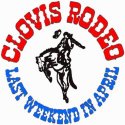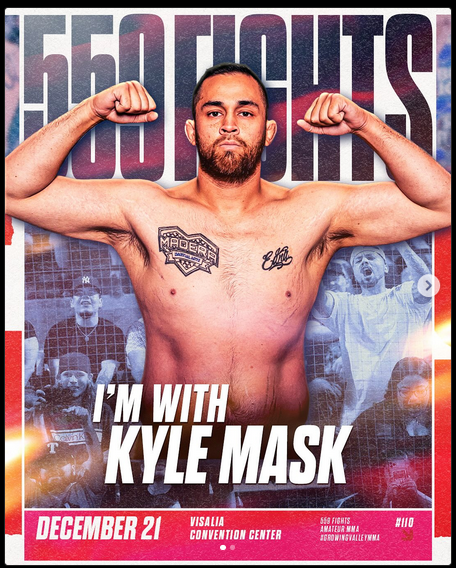 Fresno – Former major league baseball star Gus Zernial died Thursday afternoon at the age of 87. In the 50’s he was a force at the plate in the American League winning the Triple Crown and smacking 237 dingers in his 11 year career. In the 70’s he was the sportscaster for KFSN Channel 30 in Fresno, then in retirement became a longtime ambassador for the Fresno Grizzlies, the Triple A affiliate of the San Francisco Giants.
Fresno – Former major league baseball star Gus Zernial died Thursday afternoon at the age of 87. In the 50’s he was a force at the plate in the American League winning the Triple Crown and smacking 237 dingers in his 11 year career. In the 70’s he was the sportscaster for KFSN Channel 30 in Fresno, then in retirement became a longtime ambassador for the Fresno Grizzlies, the Triple A affiliate of the San Francisco Giants.
"Gus has been a part of the Grizzlies' family dating back to its very beginning," team president Chris Cummings said. "Following his 11-year major league career, he spent his retired life promoting his joy for and love of the game throughout the Central Valley. His spirit and energy helped bring baseball back to Fresno, and we are eternally grateful for everything he has meant to this community. His positive impact cannot be understated."
Gus Zernial was a strong, handsome man with the ability to hit a baseball a country mile. His exploits with a bat during the 1950s stacked up well against other star players on better teams whose heroics on the diamond were more ballyhooed.
Zernial’s good looks and superb athletic ability, in fact, were enough to draw comparisons to a famous comic book hero of the time. Nicknamed “Ozark Ike†after the popular comic strip by Ray Gotto, Zernial was a 6-foot-3, 220-pound slugger who played the game at times as well as anyone during his era.
A consistent run producer and a home run threat anytime he stepped into the batter’s box, Zernial was never the type of player who yearned to be in the headlines. But, he certainly appreciated the fact that some baseball fans and historians have finally started to take notice of his gaudy record - perhaps redefining his place within the pecking order of baseball greats.
“I know I didn’t have a Hall of Fame career,†said Zernial, “but I had some Hall of Fame years. I set goals for myself every year to be in the top five of most categories and I think I did that most of the time. I did consider myself to be a power hitter, for sure.
“At the time, it wasn’t really known, but I think history is starting to show that I was a pretty good hitter. I just appreciate all the recognition I’ve received over the years.â€
Former broadcaster and Pittsburgh Pirates manager Fred Haney tagged Zernial with his famous nickname when he was calling games in the booth for the Hollywood Stars in the Pacific Coast League. Zernial was a standout left fielder for the Stars in 1947 and ‘48 - often playing in front of luminaries sitting in the stands like Bob Hope, Bing Crosby, Burt Lancaster and Debbie Reynolds.
The comic strip (which ran in approximately 250 newspapers nationwide) featured the mythical escapades of hillbilly athlete extraordinaire Ike McBatt - a baseball star who also fancied himself a football and basketball player as well as a boxer. Zernial (born in Beaumont, Texas) never was such a “man for all seasons.â€
Yet, his feats on the baseball diamond were nearly as impressive. In 1948, he hit a robust .322 with 40 home runs and 130 runs scored while leading the PCL with 237 hits and 156 runs batted in. It’s no wonder why Haney thought it appropriate to give Zernial such a well-deserved nickname.
“I didn’t mind it at all,†Zernial said. “I have one of the comic book magazines.â€
Back when Zernial was in his prime, baseball nicknames were commonplace: Ted “The Splendid Splinter†Williams, “Joltin’ Joe†DiMaggio, Stan “The Man†Musial. Today, the colorful monikers are very rarely used to describe any player.
“I don’t know why,†said Zernial, “but I do know the game has changed a lot from the standpoint of the temperament of the players and their attitudes. They make more mistakes today in one game than you can shake a stick at. Fundamentals are no longer part of the game.â€
They were in Zernial’s era, though. While there are now 30 teams in the major leagues, baseball in the 1950s was a tough gig to make - with only eight teams in each league. Fewer teams, of course, meant fewer job openings for prospects in Zernial’s day. Hence, mastery of the game’s fundamentals were a must for any potential ballplayer. Indeed, it was a must qualification for any major league applicant.
And, as his baseball resume can attest, Zernial certainly had the fundamentals down pat - both in the field and at the plate. Prior to his stint with the Stars, Zernial began his professional career in 1942 at Waycross in the Georgia-Florida League, hitting .286 in 95 games. After three years in the military during World War II, Zernial hit .333 in 1946 for Burlington in the Carolina League with a league-leading 41 homers along with 111 RBI.
After mauling PCL pitching with the Stars, Zernial broke into the majors in 1949 with the Chicago White Sox and hit .318 in 73 games. He missed two months of his rookie season with a broken right collarbone after making a tumbling catch in left field during a 3-2 loss on May 28 against the Cleveland Indians. It was the first of two broken collarbones for Zernial during his career.
“I thought I was a good outfielder,†said Zernial, who broke his left collarbone while trying to make a diving catch during an 18-0 loss to the Boston Red Sox on July 11, 1954. “I wished I learned to do what guys do now, though. When they dive for balls, they slide on their stomachs.
“I wished I learned that when I played because we tried to roll - take our bodies under us and roll over. But, the first thing to hit the ground is your shoulder and that’s how I broke both of mine. I didn’t belly flop; I tried to roll. And, I weighed 220 pounds and I didn’t get the roll in completely. It was a solid 220, too.â€
Still, Zernial’s aggressiveness in the outfield proved to be beneficial. With a strong arm, he led the American League with 18 outfield assists in 1951 and had 17 assists in ’53 to rank among the leaders. Others might have been smoother, but Zernial (who had a .968 lifetime fielding percentage) was no slouch in left field.
Besides, Zernial earned his keep with the bat. He hit.280 with a club-record 29 home runs and 93 ribbies in 1950 for the Chisox - breaking the team’s previous standard of 27 round-trippers by Zeke Bonura in 1934 and Joe Kuhel in 1940. He hit four homers in a doubleheader on Oct. 1, becoming only the fourth player to accomplish the twin bill feat. Later, Musial slugged five home runs in a doubleheader in 1954 to break that mark.
But, Chicago sent him packing as part of a three-team trade involving the Philadelphia Athletics and the Cleveland Indians on April 30, 1951. It was a blockbuster transaction that transpired only a week or so into the season.
 Chicago got the sensational Minnie Minoso from the Indians and outfielder Paul Lehner from Philadelphia, who sent pitcher Lou Brissie to Cleveland. In return, the A’s got outfielder Dave Philley from Chicago and pitcher Sam Zoldak and catcher Ray Murray from the tribe. Zernial ended up in an A’s uniform.
Chicago got the sensational Minnie Minoso from the Indians and outfielder Paul Lehner from Philadelphia, who sent pitcher Lou Brissie to Cleveland. In return, the A’s got outfielder Dave Philley from Chicago and pitcher Sam Zoldak and catcher Ray Murray from the tribe. Zernial ended up in an A’s uniform.
“It turned out all right but I was disappointed in the trade at the time,†Zernial said. “I liked Chicago and I wanted to play in Chicago. In 1950, I played a full season and set a record in Chicago. But, Frank Lane (of the White Sox) and I went nose-to-nose a few times. We ended up being friends but we didn’t agree with each other. He was the general manager and you know who wins a battle like that. He traded me as soon as he could.â€
In hindsight, the deal should not have come as a surprise to Zernial. Lane (who during his career was also the GM for the St. Louis Cardinals and Cleveland) was infamous for trading his star players. He dealt away the likes of Red Schoendienst, Roger Maris, Rocky Colavito, and Norm Cash. He even tried to trade Musial on one occasion - but not before Cardinal owner Gussie Busch put the brakes on that ill-advised move.
“Every club (Lane) went to,†Zernial said, “he tried to trade his top guys. At first, yeah, I was disappointed in the trade. But, I knew (Philadelphia manager) Jimmie Dykes well and played for him in the minors, so I settled in quite well with the A’sâ€
He certainly did. Zernial led the American League in 1951 with 33 home runs and a career-high 129 RBI while hitting .268. It was the first of three consecutive seasons for Zernial with 100 or more ribbies as he also drove home 100 runs in ‘52 and another 108 in ‘53. Only third baseman Al Rosen of the Indians had more ribbies (468) in the American League than Zernial’s 430 from 1950 to ‘53.
The 1953 campaign was perhaps the best of Zernial’s 11-year major league career. He hit a solid .284 with a career-high 42 homers as he appeared in his only all-star game that year at Cincinnati‘s Crosley Field. He nearly won his second AL home run title before MVP Rosen (with 43) nipped him at the wire.
“I led the league in home runs the whole year ’till Rosen tied me and beat me out the last day of the season,†said Zernial, who blasted 30 or more homers in a season three times. “I took no stride and I just turned from my hips and used my arms. I was very strong and I became a zone hitter. I waited for pitches in my zone and tried to drive them. That was my philosophy. Trying to apply it is difficult, but I learned to do it and cut down on my strikeouts.â€
 Zernial (like other good players before him and since) never got the chance to play in a World Series. In fact, his teams usually languished in or near the cellar of the Junior Circuit. The closest he ever got to the post-season was fourth place - with Philadelphia in 1952 and with Detroit in ’59, the last year of his career.
Zernial (like other good players before him and since) never got the chance to play in a World Series. In fact, his teams usually languished in or near the cellar of the Junior Circuit. The closest he ever got to the post-season was fourth place - with Philadelphia in 1952 and with Detroit in ’59, the last year of his career.
“It would have meant a great deal to me,†said Zernial, “because that’s the ultimate in what you want to do. You’re in the profession to be a champion. I played in one all-star game and I was fortunate to do that. But, playing in the World Series would have meant a great deal to me.â€
Shortstop Luke Appling was a Hall of Famer who also won two batting titles - in 1936 (.388) and 1943 (.328). He was 42 years old and closing out his career with the Chisox when Zernial burst onto the big league scene in ‘49.
“He took me under his wing,†Zernial said. “He was a lot older than I was. He’s my all-time shortstop.â€
Hall of Fame second baseman Nellie Fox, sweet-swinging first baseman Eddie Robinson, steady outfielder Elmer Valo, and two-time batting champ Mickey Vernon were also former teammates and opponents who made a big impact on Zernial as players and people. He admired them a lot.
“Nellie Fox would be my second baseman,†said Zernial, who is currently writing a book about his career. “Mickey Vernon and Eddie Robinson were also great players. Elmer Valo was a great guy and he was a bull. He played the game hard.â€
Left-handed pitchers Bobby Shantz and Billy Pierce were also notable to Zernial. Shantz (just 5-foot-6) had a phenomenal year in 1952 with Philadelphia - winning the American League MVP trophy with a 24-7 record. Pierce, a seven-time all-star, won a league-leading 20 games with Chicago in 1957 and 211 overall.
“Bobby Shantz and Billy Pierce were two of the best lefties in the league,†Zernial said. “Mel Parnell, Herb Score, Joe Page, Whitey Ford - I could name a lot of them. But, Shantz and Pierce took a backseat to nobody. Bobby was MVP in 1952 and weighed just 139 pounds. He could beat the Yankees any day of the week.â€
Another player that Zernial had no problem with was DiMaggio. However, the great DiMaggio apparently had a beef with Zernial.
Why? Because of Marilyn Monroe.
Basically, Zernial was a victim of an overzealous New York press who (according to Zernial) were bent on reporting how Zernial introduced Joltin’ Joe to the blond Hollywood bombshell. It wasn’t the way they portrayed it, Zernial explained.
 In ’51, Twentieth Century Fox set up a publicity photo shoot for Monroe (who’d never seen a baseball game) during Spring Training in California. Movie execs asked Zernial to be part of the picture. As the sexy and curvaceous star took her stance in the batter‘s box, Zernial wrapped his arms around Monroe (dressed in skimpy shorts and heels) to demonstrate how to hold the bat. It was all in good fun, according to Zernial.
In ’51, Twentieth Century Fox set up a publicity photo shoot for Monroe (who’d never seen a baseball game) during Spring Training in California. Movie execs asked Zernial to be part of the picture. As the sexy and curvaceous star took her stance in the batter‘s box, Zernial wrapped his arms around Monroe (dressed in skimpy shorts and heels) to demonstrate how to hold the bat. It was all in good fun, according to Zernial.
The photo made the newspapers and magazines immediately. DiMaggio, who was in Los Angeles for a charity game between retired stars and current players, was none too happy about it (and perhaps was a tad jealous.) Shortly thereafter, he asked Zernial about her. Eventually, DiMaggio got a date with Monroe through their agents.
“I introduced Joe to Marilyn indirectly through the photo shoot,†Zernial said. “The whole story was fabricated by the writers in New York. Later on, I was in New York with Philadelphia to play the Yankees. Marilyn was in New York at the same time pushing one of her movies. The writers got a hold of this since everybody involved was in New York at the same time. Joe stayed mad at me the whole time he was alive.
“He couldn’t believe someone like me could meet Marilyn Monroe. He made the comment ‘Why should a busher like me get to meet her?’ The writers made it up and said I introduced Marilyn to Joe directly, but it was an indirect thing because of the pictures and the fact we all happened to be in New York at the same time. Joe thought I was the one that fabricated the whole thing, but I never even saw Marilyn in New York at that particular time. That’s how it will always be known but it wasn’t that way.â€
Zernial and his second wife Marla have been married for 45 years. They have two children - a son named James who is 48 and a daughter named Lisa who is 43.
“My wife knows very well what took place back in those days,†said Zernial with laughter. “Besides, she came out of the same batch of women that Marilyn Monroe did! I ended up doing better than Joe did, I think.â€
 The 82-year-old Zernial never drank or smoked. But, he had an endorsement deal with Chesterfield cigarettes during his heyday. As part of the agreement, the tobacco company shipped him two cartons of smokes every week during the season.
The 82-year-old Zernial never drank or smoked. But, he had an endorsement deal with Chesterfield cigarettes during his heyday. As part of the agreement, the tobacco company shipped him two cartons of smokes every week during the season.
“I would give them away to the players,†said Zernial, who turns 83 on June 27. “The clubhouse manager asked me not to do it because he was selling them to the players at the time. I was taking his concessions away. I didn’t realize it until he told me about it. So, I gave mine to him and told him to sell those to the guys.â€
Zernial swatted seven home runs in a four-game span in May 1951 to share an American League record with Tony Lazzeri (who did it in 1936) and Frank Howard (who did it in 1968.) Zernial is pictured on his popular 1952 Topps baseball card holding a bat with six baseballs stuck to it - symbolizing his record-tying six homers in three games.
“We used scotch tape,†Zernial explained. “Later that same day after we took the picture, I hit a home run my first time up for seven home runs in four games. We didn’t bother taking another picture with seven balls.â€
In 1973, the American League introduced the designated hitter rule - much to the chagrin of many baseball purists. Zernial, however, likes the rule.
“I think the DH is good for baseball,†Zernial said. “If you have a good hitter but he can’t play any position, why shouldn’t a team have a way to get him in the lineup? I also believe in the designated runner. I believe you should be able to utilize your whole team off the bench.â€
On May 26, 1954, Zernial hit the last grand slam in the history of the Philadelphia A’s during a 6-5 win over the Red Sox. It was one of nine grand slams for Zernial in his career as the A’s moved to Kansas City the following season. When Zernial moved into the twilight of his career, he became a pinch-hitting specialist.
Zernial was traded to the Detroit Tigers in November 1957 in a 13-player swap which also included Billy Martin and Mickey McDermott. Zernial ended up leading the AL with 15 pinch hits while hitting .395 as a pinch-hitter in ‘58. At one point, he was tied with George Crowe and Smoky Burgess for the major league record with 10 career pinch-hit homers.
 “It’s tough because you haven’t see any pitches,†Zernial said of pinch-hitting. “You’ve been sitting on the bench the whole time. What makes it easier to do is to study the pitchers and know what they’re throwing. You learn their patterns.â€
“It’s tough because you haven’t see any pitches,†Zernial said of pinch-hitting. “You’ve been sitting on the bench the whole time. What makes it easier to do is to study the pitchers and know what they’re throwing. You learn their patterns.â€
Zernial was certainly one of the top sluggers of the 1950s; only Mickey Mantle (280) and Yogi Berra (256) slammed more home runs in the American League during that decade than Zernial’s total of 232. He also was one of the Junior Circuit’s top RBI men with 738 ribbies during the same period. Berra (997), Jackie Jensen (863), Mantle (841), Larry Doby (817), Minoso (790), and Vic Wertz (745) ranked Nos. 1-6 in RBI ahead of Zernial.
Zernial, who hit .265 with 237 home runs and 776 RBI during his career, slammed his 200th career homer off Early Wynn of the Indians on April 26, 1957. For many years, Zernial held the record for most home runs hit by a player whose last name ended in “Z.†However, Todd Zeile has since passed him with 253 homers.
Up until two years ago, Zernial used to be the director of community development for the Fresno Grizzlies - the Triple-A minor league affiliate for the San Francisco Giants. He was instrumental in bringing pro baseball back to Fresno in 1998, helping to raise money for the city’s new stadium.
Zernial was also a sports broadcaster for over four decades after his baseball career ended in 1959, mostly as the play-by-play man for Fresno State University’s baseball, football, basketball, and track teams. With the Grizzlies, he also served as the color analyst on the radio during home games.
“I never thought I would retire from baseball completely,†Zernial said. “I was one of the builders and founders of the Triple-A stadium in Fresno. But, since I’ve been out of the game for a couple of years, I’ve just been working on my book.â€
In October 2000, Zernial was named by the Philadelphia Athletics Historical Society to the A’s all-century team, along with Jimmie Foxx, Eddie Collins, Eddie Joost, Frank “Home Run†Baker, Al Simmons, Sam Chapman, and Mickey Cochrane as the position players. Among the pitchers were Lefty Grove, Eddie Plank, Chief Bender, George Earnshaw, Jack Coombs, and Shantz.
“I’m quite proud of that,†Zernial said. “That links me with a lot of great ballplayers and Hall of Famers. When you’re linked with those kind of guys and being associated with them, it’s a great honor. It truly is. It feels good.
 “A lot of guys don’t get to play in an all-star game or a World Series. They may not lead the league in anything but they’re good ballplayers. To be linked to guys like that is truly an honor for me.â€
“A lot of guys don’t get to play in an all-star game or a World Series. They may not lead the league in anything but they’re good ballplayers. To be linked to guys like that is truly an honor for me.â€
Like his nickname, Zernial’s admirable record on the diamond has stuck with him through the years. Unlike the comic book hero for which he was nicknamed, Zernial’s feats were not mythical; they were real.
At times, they were hard to believe. But, they were definitely not comical.
Funeral services are planned for Wednesday January 26th at Clovis Hills Community Church at 10590 North Willow Avenue in Clovis at 11:00am. Visitation is scheduled for January 25th from 2:00pm to 7:00pm at Boice Funeral Home in Clovis. Call (559) 559 299-4372 for more information.
Zernial’s Biography from http://www.baseballtoddsdugout.com/
Written by Todd Newville















































